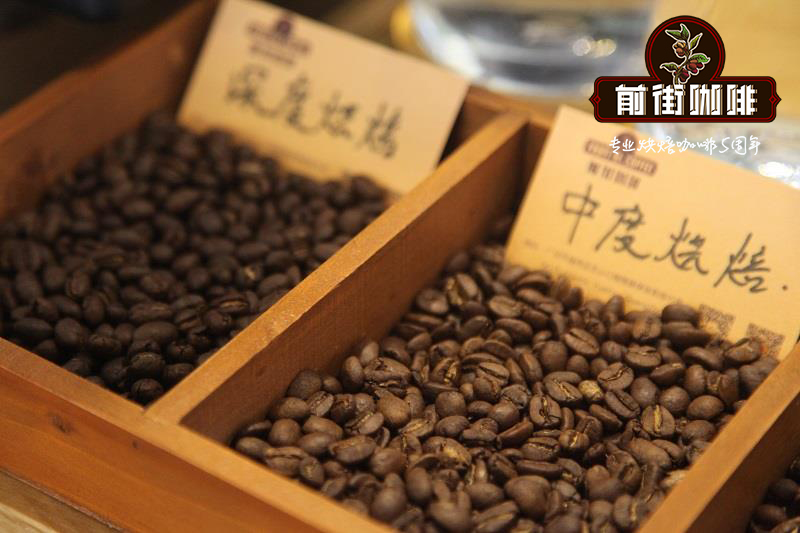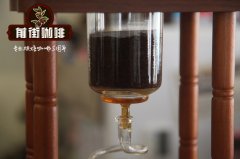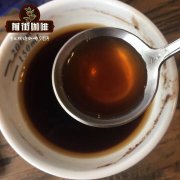What are the characteristics of El Salvador bourbon coffee? What kind of coffee can represent the flavor of Saudi Arabia?

Country: El Salvador
Producing area: Apaneca-Irametepec
Farm: St. Matteau
Variety: bourbon
Treatment: honey treatment
Flavor: balance, green apple, taffy
Apaneca-Irametepec
The Apaneca-Ilamatepec Mountains extend throughout the Ahuachapan,Santa Ana and Sonsonate departments in northwestern El Salvador, bordering Guatemala. The first coffee seeds from Guatemala entered El Salvador at the end of the 18th century. Coffee production in El Salvador begins in these mountains and eventually extends to other parts of the country.
The United Nations Educational, Scientific and Cultural Organization announced the establishment of the Apaneca-Arabetepec Biosphere Reserve in 2007. The biosphere reserve includes forest plantations, coffee plantations, grasslands and crops. There are 12 endangered plants and 58 endangered species, as well as 12 endemic species of birds and other animals.
The protected areas include wetlands that provide fresh water to the country: Lake Kotpeck, Laguna Cape Verde and Laguna Rasnifas. Due to current volcanic activity, they have aquatic vegetation ecosystems and aquifer recharge areas.

Nearly 4000 hectares of land are allocated as nature reserves, while 39500 hectares correspond to shaded coffee plantations that connect the core areas to each other, thus enabling the movement of flora and fauna, thus becoming an essential part of the Central American Biological Corridor.
Finca Santa Matilde is located in the Appachaka-Irametepec Mountains and Concepci ó nde Ataco in Ahuachapan County, a coffee region of the same name. In the late 1700s, farmers in Ahuachapan first planted seeds from Guatemala to grow coffee in El Salvador, and then officially began production in the 1800s.
Santa Matilde is currently owned by the fifth generation coffee producers of the Ariz-Herrera family, making it one of the first farms in the Concepci ó nde Ataco region to grow specialty coffee, which began in 1875. And communities around the farm have been employed for more than 100 years. The Ariz-Herrera family is one of five local families that founded FUNDATACO in 1991. The foundation helps children in the area attend football schools and seek sports opportunities and scholarships.
Santa Matilde's coffee is partially processed in Germania, a small factory on the farm, which is equipped with desizing agent, washing equipment and drying equipment. Santa Matilde pulps freshly harvested cherries without water to retain all the mucus and then dry them on an elevated bed for up to 14 days to achieve the best conditions. After drying, the coffee will be stored in the El Carmens warehouse, where the Santa Matilde coffee will be dried and ready for export.

Some coffee can also be dried on the clay terrace in El Carmens. Coffee dries faster on this hot surface, where honey-processed coffee takes up to 14 days to dry, and then transferred to the warehouse for buyback rest.
Santa Matilde's coffee quality has won wide recognition, including ranking first in the El Salvador Cup of Excellence in 2018 and 2019. Their enthusiasm for providing quality coffee promotes their innovation and development of quality coffee as well as the sustainable development of the community.
Important Notice :
前街咖啡 FrontStreet Coffee has moved to new addredd:
FrontStreet Coffee Address: 315,Donghua East Road,GuangZhou
Tel:020 38364473
- Prev

What's so special about coffee treated with Essex and Shifei honey? Introduction to the treatment process of Koke cleaning Station
Country of origin: Ethiopia region: Yega Chuefei production Unit: Koke cleaning Station small Farmer donor varieties: Jiulumi, Degas, Voriso treatment: honey treatment harvest: November to March cup test: Jasmine, peach, blueberry, coconut Yirgacheffe literally translated as the land of many springs, with ideal topography, elevation and water sources, it can produce and process high quality
- Next

How does Costa Rican Red Honey treat Coffee Flavor? introduction to Tarazu Castro Family Coffee treatment
Located in the high mountains of the South Pacific south of San Jose, the capital of Costa Rica, the Tarazu region has one of the highest planting densities in Central America, with many farms 2000 meters or more above sea level. It is called Zona de Los Santos locally because of the number of towns with San or Santa in its name. The climate of Tarraz has two distinct seasons.
Related
- Detailed explanation of Jadeite planting Land in Panamanian Jadeite Manor introduction to the grading system of Jadeite competitive bidding, Red bid, Green bid and Rose Summer
- Story of Coffee planting in Brenka region of Costa Rica Stonehenge Manor anaerobic heavy honey treatment of flavor mouth
- What's on the barrel of Blue Mountain Coffee beans?
- Can American coffee also pull flowers? How to use hot American style to pull out a good-looking pattern?
- Can you make a cold extract with coffee beans? What is the right proportion for cold-extracted coffee formula?
- Indonesian PWN Gold Mandrine Coffee Origin Features Flavor How to Chong? Mandolin coffee is American.
- A brief introduction to the flavor characteristics of Brazilian yellow bourbon coffee beans
- What is the effect of different water quality on the flavor of cold-extracted coffee? What kind of water is best for brewing coffee?
- Why do you think of Rose Summer whenever you mention Panamanian coffee?
- Introduction to the characteristics of authentic blue mountain coffee bean producing areas? What is the CIB Coffee Authority in Jamaica?

